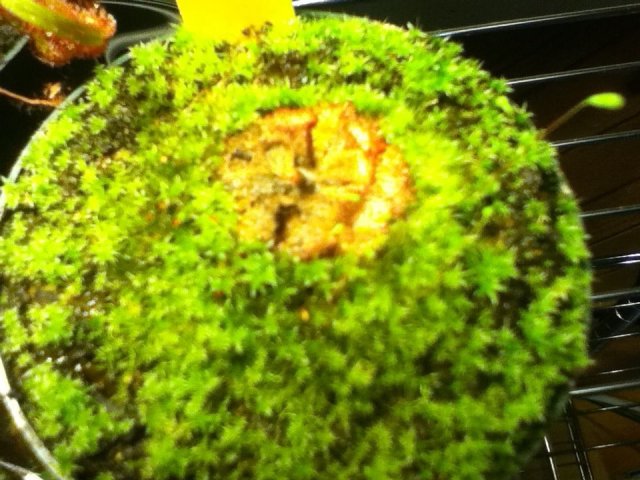Question
 DroseraBurmanii-2
DroseraBurmanii-2
Hello,
To avoid leaving anything out, I will use your bullet points as a guide.
1) Drosera burmanii
2) The plant looks wilted.
3) Plant is near south facing window, with supplemental 16 hour/day lighting provided by fluorescent tube fixture. Water is Portland, Oregon, tap water, usually left out overnight to allow chlorine gas to dissipate. Plant is top-watered and sits in about 2" of water in its tray. Soil is original soil mix from the nursery. I got the plant directly from the nursery about two months ago. The other plants in the same order (though different species) all look fine.
4) Portland, Oregon area - grown indoors.
5) This is as clear a shot as we could get with our camera. If we need a clearer one I will try to borrow a newer camera.
In summary, this is a relatively fresh from the nursery plant, still in its original soil. It has been getting top watered with Bull Run water. I don't do anything goony like try to feed it hamburger. While all the other plants have been doing fine sitting on a plant shelf near a south facing window with supplemental lighting in our house this one has not. If this one is pickier about heat it than Drosera aliciae or Drosera capensis that could be it. Our house tends to be in the 60-65 F range in the winter, with higher heat when we're running the wood stove in the evening.
Thanks,
Adam
AnswerHi Adam,
Your temperatures are a strong possible culprit here. This plant likes it a bit warmer, as opposed to your D. aliciae and D. capensis which are happiest when it's cool. In fact, I usually have to use heat mats to get burmanii seed to germinate in the winter. They originate in Southeast Asia and Northern Australia, so they like it warm.
The other factor could be the age of the plant. D. burmanii is an annual. They tend to live one season, bloom, then die. Many people extend their lives by cutting off flowers, but otherwise you have to collect seed when they bloom to get more plants. We have several older ones in the greenhouse that are on their way out.
This plant is also fast growing, so they tend to need a bit more food than some sundews. If it was a long time since it caught anything, that could also be something that may have helped it's demise.
Fortunately, it's fairly easy to get seeds for this species. When grown from seed you tend to get a little over a year out of one.
Jeff Dallas
Sarracenia Northwest
http://www.cobraplant.com






